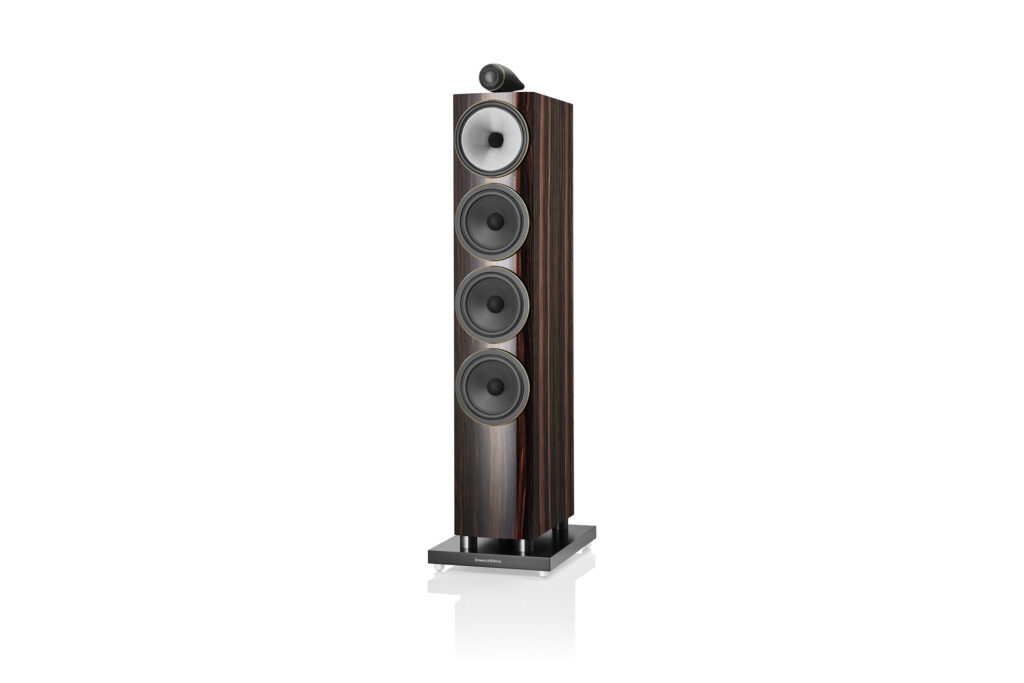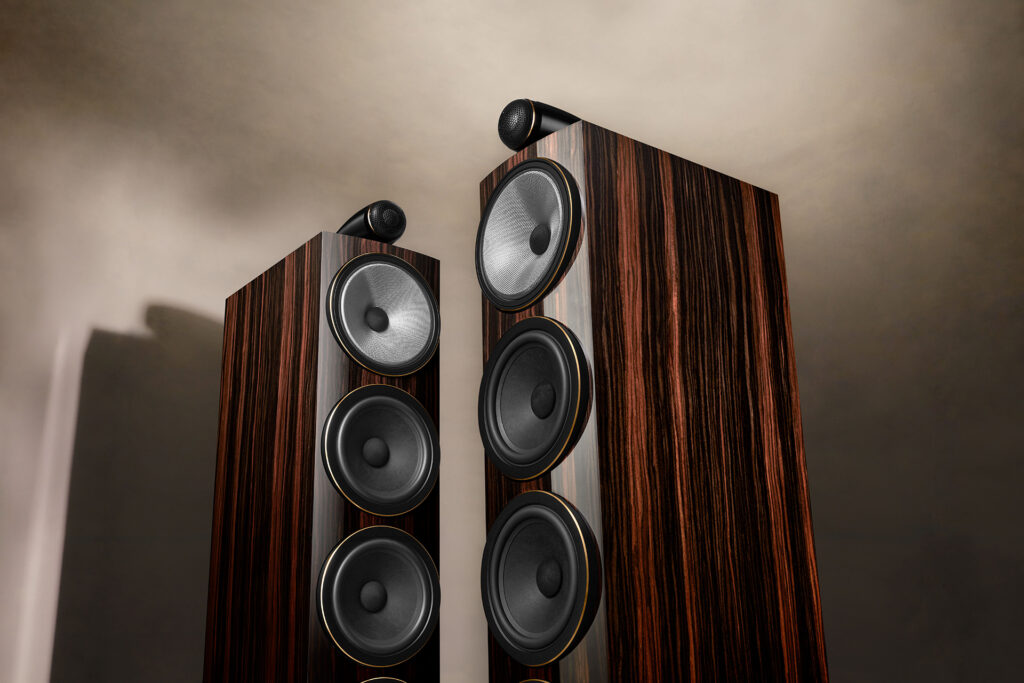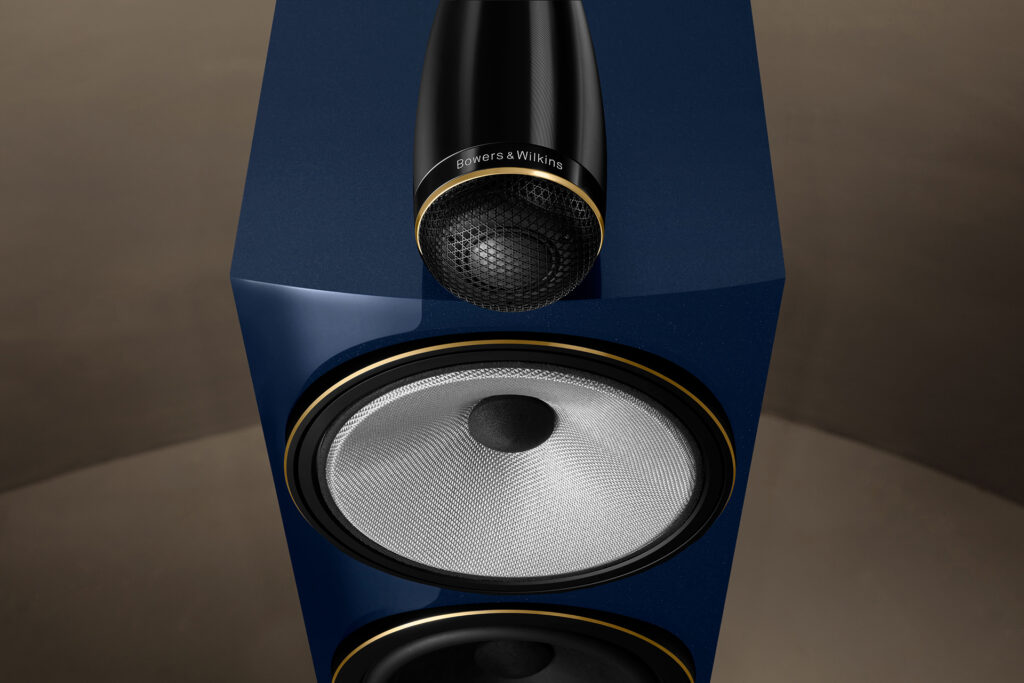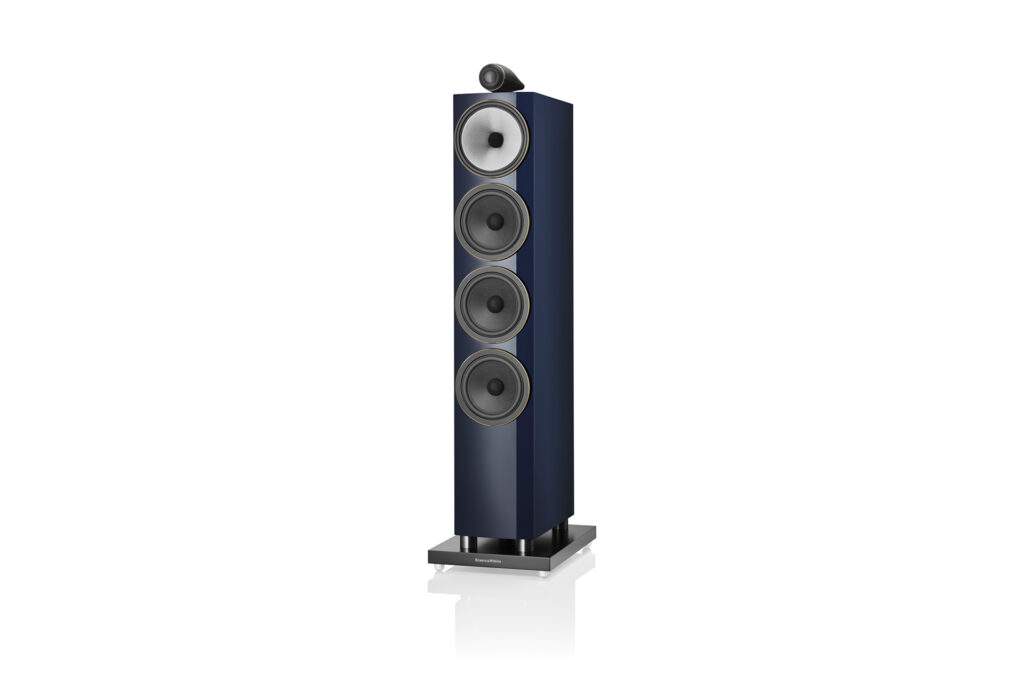It is not every day, or even every year, that Bowers & Wilkins launches a new Signature line. I remember going into audio stores in the early 1990s and seeing the unique-looking Silver Signature speakers, with their crossed silver bars protecting the drivers. The salesperson was starting a demonstration for someone else and went into great detail about what made the Silver Signature different from the other speakers in the Bowers & Wilkins lineup. Since that time, there have been a handful of other Signature lines introduced, each with a combination of performance and aesthetic features that set them apart.
The Bowers & Wilkins 700 Series has a well-earned reputation of delivering audiophile performance at attainable pricing. The current Bowers & Wilkins 700 S3 lineup ranges in price from $1,799 to $6,999 per pair. While not inexpensive in comparison to many mass market speakers, they are extremely reasonable in the world of high-end audio, where mid-five-figure speakers are becoming all too common. The 700 Series is Bowers & Wilkins penultimate line, positioned just below the 800 Series and. unlike trickle-down economics, which sounded good in theory but did not work, the trickle-down technology from the 800 Series works and sounds good in reality. The current S3 generation of the 700 Series lineup is a noticeable improvement over the prior generation, so I was curious to see how the Signature versions would change or improve upon them.

Earlier this year, Bowers & Wilkins introduced the 700 Series Signature lineup. The line consists of three models, the floorstanding 702 S3 Signature we are reviewing here, the stand-mount 705 S3, and, for the first time in quite a while, a center channel speaker, the HTM71 S3 Signature. As with prior Signature lines, the current 700 Series Signature speakers differentiate themselves from the 700 S3 lineup with a combination of aesthetic and audio component upgrades to distinguish them, whether you are deep into a listening experience or simply looking at them as you walk across your living room.
What Makes the Bowers & Wilkins 702 S3 Signature Loudspeakers Special?
- The Bowers & Wilkins 702 S3 Signature is available in two exclusive finish options. The first option is the Midnight Blue Metallic paint that made its Bowers & Wilkins debut on the 800 D4 Signature Series. The second option, and the one I received for review, is Datuk Gloss Veneer. The Datuk Gloss Veneer was utilized in the prior 700 Signature series, and is sourced from an Italian wood processing company that promotes sustainability with wood sourced from carefully managed forests. Both finishes have multiple coats of paint or lacquer, producing a deep and luxurious finish that will be at home in upscale surroundings.
- There are additional other visual clues that set the Bowers & Wilkins 702 S3 Signature apart. The two most noticeable, after the finishes themselves, are the gold-colored trim bezels around the driver pods and tweeter grille, and the Signature logo on the rear terminal plate. However, there is another visual clue, which actually provides a performance benefit, and that is the adoption of the 800 Signature Series tweeter grille mesh pattern. The new pattern not only looks slightly different, it has more open spaces to improve sound transmission.
- The Bowers & Wilkins 702 S3 Signature also has an improved crossover, a better driver suspension and upgraded speaker terminals to improve audio performance. Bowers & Wilkins Signature series speakers are known for having upgraded crossover components and the 702 S3 Signature is no exception. The 702 S3 Signature features Mundorf and Bevenbi capacitors selected to maximize performance, along with new air-core inductors for the woofers. The Signature series even features new brass terminal posts said to provide a cleaner signal path.
- The Bowers & Wilkins 702 S3 Signature Series speaker builds upon the strengths of the 702 S3. Looking at the Signature series version, one will see similarities with the 702 S3, in that they share same driver configuration in the same sized cabinet. This includes a narrow baffle with a slight curve, coupled with speaker pods that project slightly from the face, which is said to minimize diffraction. The use of a down-firing port mandates the use of the included baffle.
- Bowers & Wilkins’ unique tweeter-on-top configuration from the 800 Series is found on all 700 Signature Series speakers, as you might expect. The carbon dome tweeter is nestled safely in a Satin Black aluminum pod behind the updated mesh grille. The tweeter-on-top configuration is said to improve frequency response and phase by eliminating the baffle, and providing an optimally designed chamber, which is isolated from the main speaker.
- The critical midrange is reproduced by Bowers & Wilkins tried and true fully decoupled six-inch Continuum cone FST (fixed suspension transducer). The cone is controlled by biomimetic suspension, which was introduced in the 800 D4 series, and has made its way down to the 700 Series. This is more of the trickle-down technology that actually works to improve performance.
- The three 6.5-inch Aerofoil Profile cone bass drivers provide the foundation for the Bowers & Wilkins 702 S3 Signatures. While the drivers appear to be the same as those of the 702 S3, the improved crossover provides audible improvements in the 702 S3 Signatures.
- The Bowers & Wilkins 702 S3 Signature’s physical characteristics makes it easy to fit in most rooms. The 702 S3 Signature is a three-way, ported cabinet that measure 44.8 inches tall by 7.6 inches wide and 13.9 inches deep. The plinth adds a bit to the width and depth dimensions, but the benefit of the downward-firing port provides flexibility in placement. The frequency response is stated as 46Hz – 28kHz +/- 3dB.
Why Should You Care About the Bowers & Wilkins 702 S3 Signature?
The newest Signature series from Bowers & Wilkins takes an already high-performance speaker and improves it. The Bowers & Wilkins 700 Series is known for performing well for its price points. What if the designers were provided with an increased budget to improve performance? What changes would they make? The Bowers & Wilkins 702 S3 Signature answers those questions. The question is: do these changes result in any significant improvements in performance? Spoiler alert: the answer is yes.

Some Things You Might Not Like About the Bowers & Wilkins 702 S3 Signature
- The Bowers & Wilkins 702 S3 Signature speakers have a 3.1-ohm minimum impedance, which may be a challenge for lower-powered amplifiers. I listened to the 702 S3 Signatures with two different solid-state amplifiers that had plenty of power, so that was not an issue for my listening sessions. However, if your favorite amplifier is a lower-powered one, or perhaps a tube unit that is not particularly stable at lower impedances, you should try the speakers with your amplifier before committing.
- The Bowers & Wilkins 702 S3 Signatures are pretty similar to their 702 S3 (non-Signature) brethren. The changes, other than the finish, are incremental. With the price premium the Signature model commands, there will no doubt be some people opining that the step-up benefits do not pencil out. Not to worry, the 702 S3 is still available.
- The Bowers & Wilkins 702 S3 loudspeakers are taller than the prior generation. The now-required floor plinth adds about four inches of height. This could be an issue if sightlines to a screen or artwork are a concern.
Listening to the Bowers & Wilkins 702 S3 Signature …
I did the majority of my listening with Marantz electronics, specifically the Marantz Model 30integrated amplifier, being driven by the Marantz SACD 30n. Everything was connected with Wireworld cables, except for when I had the REL Classic 99 subwoofer in the system as the REL came with its own proprietary cable. I had the speakers placed approximately eight feet apart, and just over two feet from the front wall. When finalizing the positioning, I ended up toeing the speakers in, so that they were aimed a few feet behind my listening position. This is more toed-in than I recall using with past Bowers & Wilkins floorstanding loudspeakers.
I started my listening with two female vocalists, Joss Stone and Shelby Lynne. I did this as a bit of a torture test, as Bowers & Wilkins has a reputation of having a house sound profile with elevated highs. This profile, coupled with these female vocalist tracks, would be sure to exaggerate any sibilance. Lynne’ s voice in “Just A Little Lovin’” (Qobuz, Hi-Res, Lost Highway Records) had no annoying sibilance. This was a good start, as I have heard sibilance on this track when listening through other speakers with brighter top ends. Likewise, the cymbal strike was detailed and dynamic, without being harsh. Moving down the frequency range, the reproduction of bass guitar was detailed, natural-sounding and had some weight to it. The soundstage was appropriately-sized and three-dimensional, with the speakers disappearing into it. Stone’s voice on the “The Chokin’ Kind” did have a slight touch of sibilance, but no more than what I have heard on just about every neutrally-voiced speaker. In other words, I don’t think the 702 S3 Signatures caused it, but they are not going to hide anything either. As before, the soundstage is three-dimensional, with Stone solidly positioned in front of the instruments and other vocalists.
I then tried a couple of tracks we listened to for the unveiling of the S3 series, including Neil Young’s “Old Man” from Live at Massey Hall. The guitar strings in the opening were even better defined and the vocals were cleaner as well, as compared to the non-Signature Bowers & Wilkins 702 S3s, which were also an improvement on the S2s. The overall voicing of the speakers appeared very similar to that of the 702 S3s, but slightly smoothed-out. In particular, the midrange and highs in the Signatures were not as forward as with the S3s, but were rendered with a touch more detail than I recall. I did not have a pair of 702 S3s handy, so I did not try taking any measurements to compare the two.
Continuing on our journey down the frequency range, I came to another track form the S3 introduction, Bille Eilish’s “Therefore I Am” from QoBuz. As with the other pieces, the Signatures had more detail throughout the frequency range. The Bowers & Wilkins 702 S3 Signatures reached lower than I would have anticipated with this size of cabinet, and were dynamic. The Marantz Model 30 integrated amp had no problems driving these speakers at louder volumes, while keeping the system composed. While the bass was deep and well-rendered, on bass-heavy tracks like this and Boom Kitty’s “Badland,” bass aficionados may want a touch more, especially in a large room. Some of my listening was with REL’s new Classic 99, which did a nice job of blending in and adding a bit more low-end punch. That said, a subwoofer is certainly not necessary with this speaker, especially in a mid-sized or smaller room.
Will the Bowers & Wilkins 702 S3 Signature Speakers Hold Their Value?
I find that well-engineered, traditional speakers with “normal” finishes do a better-than-average job holding their value. These speakers fit that description. Add in the fact that Bowers & Wilkins is an A-list audiophile brand, therefore more likely to be around in the unlikely event the speakers need servicing, and the likelihood of retaining value only increases.
One item to keep in mind with any larger or heavier item is that shipping will be expensive, so if you live in a more rural area, your resale market will be limited, unless you factor in the not insignificant shipping costs.

What is the Competition for the Bowers & Wilkins 702 S3 Signature?
Revel’s F228Be at $11,000 (buy at Crutchfield) is a bit more expensive and is a bit larger. The Revel is a bit more neutral in the midrange, with more bass extension, but I think more people will find the Bowers & Wilkins to be more attractive, and may prefer the Bowers & Wilkins’ ever-so-slight bump of the midrange.
The Focal Kanta No. 2 are also $11,000 (buy at Crutchfield) and have a similar driver array to those of the Bowers & Wilkins. I have spent some significant time with the very similar Focal Kantas, and found them to sound a little bit brighter than the Bowers & Wilkins 702 S2 Signature speakers on the top end. Both are beautifully made, well-engineered speakers, but if you are looking for a modern design, Focal is compelling with its wide offering of vibrant colors.

Final Thoughts on the Bowers & Wilkins 702 S3 Signature Loudspeakers …
I think the Bowers & Wilkins 702 S3 speakers may be the sweet spot in the Bowers & Wilkins line. They provide great performance at a competitive price, and while the 800 Series provide an even higher level of performance, the 702 S3s provide much of the performance at a fraction of the price. The Bowers & Wilkins 702 S3 Signature speakers reviewed here close the gap between the 700 and 800 Series in both performance and aesthetics.
The Bowers & Wilkins 702 S3 Signatures build upon the strengths of the 702 S3s and offer incremental improvements over the non-Signature models. If you are the type of person who really wants to get the most out of their system, the Signatures are capable of providing more refinement and detail than the non-Signature models. That said, the non-Signature models are very good, but the 702 S3 Signature brings you a layer closer to the original recording, and does so in a beautiful cabinet. The 702 S3 Signatures are very easy to recommend. They sound great, looks great, and do so without breaking the bank. How much better does it get than that? Not much.



